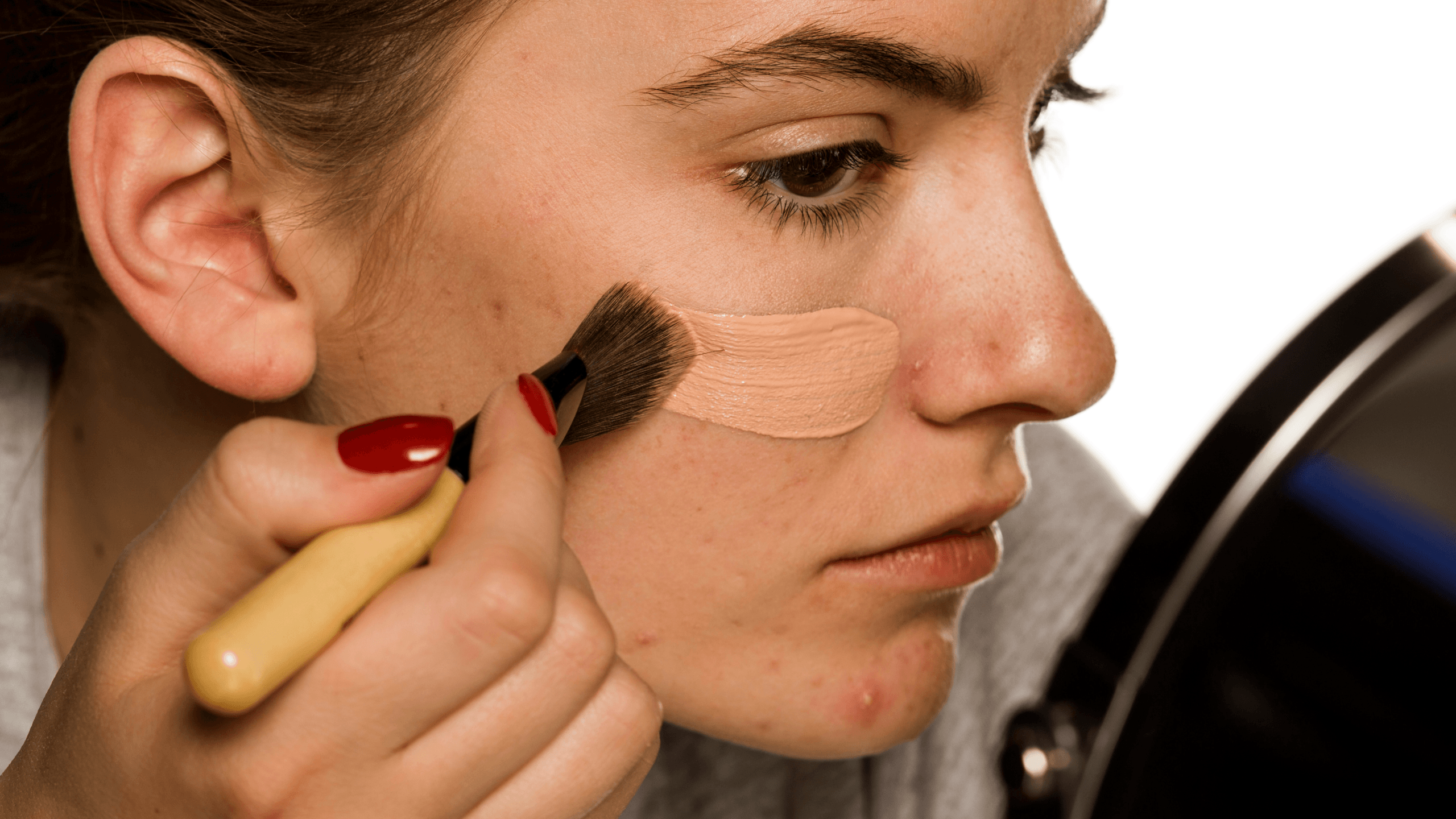Struggling with acne doesn't mean you have to give up wearing makeup. However, when you’re trying to manage acne-prone skin, it’s important to recognize that certain ingredients in makeup and skincare products can affect blemishes. Topical ingredients have the power to either calm or exacerbate acne. The key to healthy, happy skin is recognizing which ingredients have which effect.
Be Weary of Pore-Clogging (or Comedogenic) Ingredients
While some makeup brands will use acne-fighting ingredients in their makeup products, more often than not, finding the best makeup for acne has less to do with the ingredients present in the product and more to do with which ingredients aren’t present.
Because acne is caused by clogged pores, using products that contain high quantities of comedogenic, or pore-clogging, ingredients will only exacerbate it.
Comedogenic ingredients can be found in every type of topical product, from primers to foundations to blush — and everything in between. While it would be easier to advise you to avoid all products that contain any amount of comedogenic ingredients, it’s not that simple.
Some products contain small enough amounts of these products not to be classified as comedogenic. That’s why it’s extremely important to understand comedogenicity and how it's rated.
Common Comedogenic Ingredients Used in Makeup
The list of comedogenic ingredients used in everyday makeup products is quite long. Some of the most common comedogenic ingredients include:
Oils
Contrary to popular belief, using oil on oily skin doesn’t make your skin oilier! Oils can actually be very beneficial for oily and acne-prone skin. However, some oils are considered comedogenic and can clog pores.
Coconut oil is a serious offender of this… Although it’s a natural and healthful oil, it’s not the best to lather over most skin types.
Acetylated Lanolin Alcohol
Lanolin is a common ingredient used as an emollient in cosmetic products. It gives the skin a soft, smooth appearance and helps to lock in moisture. But you may be shocked by what lanolin actually is. The common skincare ingredient is the sebum (oil) from sheep skin. Acetylated lanolin alcohol is a derivative of the oil from sheep skin that has been reacted with a little lye along with acetic acid. It serves the same purpose as lanolin in cosmetic and skincare ingredients; however, it’s been found to be pore-clogging.
Oils and lanolin are just the beginning of ingredients to be aware of when evaluating your cosmetic product’s ability to clog your pores and contribute to acne breakouts. Other skincare ingredients to watch out for include:
- Isostearyl Isostearate
- Steareth-10
- Isopropyl Myristate
- Myristyl Lactate
- Oleth-3
- And so much more
Tips for Choosing & Applying Makeup if You Have Acne-Prone Skin
Now that you know what to avoid in your makeup routine to help support and your acne-prone skin, let’s dive into what you can do to take action against pesky blemishes.
Check for Non-Comedogenic Labeling
You know some of the top comedogenic ingredients. So now, it’s time to start searching for them. If looking at ingredients labels is overwhelming, you can find comedogenic ingredient checkers online, like the one here.
Some cosmetic and skincare products may say “non-comedogenic” on the packaging, but many don’t. Just be aware. If you’re still not sure, check the brand’s FAQ page or reach out to customer service. A customer service representative should be able to tell you whether a product is comedogenic or not.
Opt for Preservative-Free, Fragrance-Free Products
Aside from looking out for comedogenic ingredients, you’ll also want to be wary of any topical ingredients that can cause general skin irritation that spikes inflammation.
That’s why you’ll want to steer clear of preservatives and fragrances in your makeup. Both are on our list of the top five skincare ingredients to avoid for red, sensitive skin because they tend to cause irritation.
When thinking about your acne, you want to focus on calming blemishes and the surrounding skin.
Clean Makeup Applicators
It’s easy to push cleaning your makeup brushes and applicators to the bottom of your priority list… but the reality is that your makeup applicators harbor bacteria.
To avoid applying your makeup with bacteria-laden applicators, try to wash your makeup applicators at least once per week. To wash your brushes, squirt a gentle cleanser into the palm of your hand. Whirl your brush around into the cleanser and rinse with lukewarm water. When you’re done, reshape the brush and lay it out on a clean towel to allow it to dry.
Remove Makeup at the End of the Day
No matter how “clean” the ingredient labels on your makeup products are, removing your makeup before going to sleep every night is still a crucial step in reducing blemishes. Makeup of any kind — as well as oil and dirt from the day — can clog pores overnight.
To remove all your makeup, use a makeup remover and a cleanser before bed. These are two products that often contain preservatives and fragrance. For a clean, acne-friendly option, consider Gladskin Makeup Remover and Face Wash, which are both hypoallergenic, non-comedogenic, fragrance-free, and preservative-free skincare options.
Final Thoughts
To best support your acne-prone skin, be on the lookout for ingredients that may clog pores and exacerbate blemishes. Pore-clogging skincare products are one of the biggest threats to healthy and happy skin. But, you’ll also want to make sure you’re cleaning your makeup applicators, removing your makeup at the end of the day, and avoiding further irritation from preservatives and fragrances lurking in topical products.

